
Wine Culture and Information since 2002 - Volume 22
 Wine Culture and Information since 2002 - Volume 22 |
|
Issue 28, March 2005 |
Contents |
|
|
Rose Wine: Why Not? |
|
Among all wine styles, the ones which have always been considered as lesser children of Bacchus probably are rose wines. It would be interesting to ask Bacchus himself what he thinks about these wines and maybe, because of the typical wisdom recognized to all gods, he would probably answer that in his eyes every wine is a loved one, just like every child is equally loved by every mother. Nevertheless we humans, mortals by definitions and so distant from divine wisdom, and neither excluding the most passionate wine lovers, seem to think differently and in case we are asked to pick a category of lesser wines, the choice is most of the cases about rose wines. In case rose wines were not chosen as lesser, it simply is because they were not even considered. Most of the times, rose wines are not even considered as wines, for some strange and unjust prejudice, they are not even granted the dignity of wine. The problem of rose wines has frequently been a subject for the users of our EnoForum, and it seems they are pretty disappointed by the situation and - by reading what they write in their comments - they would like to see this wine deserving a better fortune and not to see it as a member of the not very noble family of non wines. The users of our forum believe rose wines have a very good versatility especially with the enogastronomical matching and - in particular - with fish, a kind of pairing usually considered an exclusive prerogative of white wines. Indeed, it is pretty hard to think differently from their opinions and thoughts because - we are convinced about this - rose wines should be revaluated and they do not certainly deserve the condition which they practically face since ever. Rose wines suffer from the fact of being - enologically speaking - between whites and reds, and therefore not clearly being neither one nor the other, that is not belonging to none of the two major categories of recognized wines, they simply are excluded. Rose wines are not mentioned, or they certainly are mentioned not that much, rarely are found producers who believe in these wines and their efforts are not encouraged by the market, that kind of market which is not demanding - at least not in this moment - rose wines. We heard some producers have decided to drop the production of rose wines simply because it is not convenient anymore, despite their passion for making this style of wine. The sad news is always the same: making wine means investing capitals of money and therefore it is appropriate to expect as a natural consequence - at least desirable - to make profits. What it is not sold, it is not produced. A harsh law of market, however understandable. To contribute to the bad fame of rose wines - it should be remembered - also contributed the many and certainly too much productions of the past characterized by a very low quality which did not certainly help to make a good image for these wines. Despite this trend is currently declining, it is however undeniable not all rose wines are of good quality, and the same can be said for any other type of wine as well. For many - including many wine lovers as well - rose wines simply are a waste of grapes. They believe that during their production, many of the qualities contained in skins are lost because of a limited period of maceration in the juice. According to their opinion, roses are wasted wines and subtracted to the production of the more noble reds. It should be remembered that rose wines are frequently produced with the bleeding technique, also used for the production of many and renowned red wines. In these cases part of the must macerating with skins is drawn off in order to increase the ratio of extracts in the finished products, in other words, it is used to make full bodied wines. If we consider things according to this point of view, rose wines made this way should have an excellent quality, as they are produced with high quality grapes capable of surprising tasters as soon as they are transformed into thick red wines. Nevertheless rose wines are victims of a sort of paradox and it is enough to add bubbles - hopefully by using the technique of classic method - to make them noble, looked for, appreciated and accepted. In fact, rose classic method sparkling wines live in truly different and enviable conditions, as they meet the high appreciation of bubbles lovers. Of course, we completely agree on this, because rose classic method sparkling wines - such as Champagne and Franciacorta - are capable of giving absolutely unique emotions in an explosion of wonderful aromas and tastes. Nevertheless they too are rose wines and they are not considered because of this as lesser in the bubbles' world, as it happens for rose table wines instead. Maybe rose sparkling wines producers pay more care and attention to quality? Certainly yes. However it is curious to see that whether in rose sparkling wines the rose color is recognized as noble and excellent, in table wines the same color does not have the same fortune, indeed, most of the times it is not even considered, if not denigrated. We should however admit the bad fame rose wines gained in the past is very hard to change, and despite the remarkable efforts of many producers, prejudices are always hard to change. It certainly is required a better and profitable revaluation of these wines, so versatile and pleasing to drink, very good allies of good table. Whether it is true that in white wines it is freshness of aromas to be one of the most appreciated qualities, it should not be hard to accept rose wines as organoleptic freshness is one of their main characteristics. Even the choice is pretty wide and of good quality. If we consider, for example, Italy, the selection of rose wines is pretty good and vast, certainly interesting. Let's rediscover the pleasure of rose wines: springtime is coming and with it also the new production of 2004. We just have to take our corkscrew, a glass and drink pink!
|
||||
MailBox |
|
In this column are published our reader's mail. If you have any comment or any
question or just want to express your opinion about wine, send your letters to
our editorial or fill in
the form available at
our site.
|
| I would like to know how many glasses can be served with a bottle of red wine. According to my friends, in Italy, in good quality wine bars, are usually served 5 or 6 glasses, whereas in Vienna - Austria - with a bottle are usually served up to 6 glasses. Thank you for your reply and congratulations for the site: it is clear and professionally made. |
| Angelo Calvino -- Rome (Italy) |
| Thank you for your comments of appreciation about DiWineTaste and we wish our publication will be of your satisfaction in the forthcoming months as well. The number of glasses which are usually served with a bottle mainly depend by the context. In case the bottle is being served in occasion of a banquet, the number of glasses is usually from eight to ten. By considering the volume of a bottle of wine is of 750ml, this means every guest will be served about 8 centiliters of wine. In case the bottle is being served “by the glass”, such as in case of wine bars, the number of served glasses generally is five or six, just like your friends rightly told you. |
| I would like to know whether the formation of sediments in the bottom of a bottle of red wine is a sign of genuineness or it is to be considered as a fault. |
| Marcello Surace -- Bari (Italy) |
| The formation of sediment in a bottle of red wine usually is the cause of doubts about quality and it is considered as a negative effect. Wine - because of its nature - is not a very stable liquid and is particularly sensitive to environmental and chemical conditions. Even time contributes to its alteration and in case the bottle was properly kept, this alteration - better definable as evolution - generally is positive in wines produced with this explicit purpose. The formation of sediment in red wine bottles is to be considered as an absolutely natural event, consequence of the polymerization of polyphenols - also known as tannins - that by bonding together, get heavier and therefore precipitate to the bottom. This phenomenon is particularly visible in full bodied wines - rich in solid substances - in which with time this event naturally occurs. The formation of sediment is not to be considered as a fault, however it is not even a sign of genuineness, in the sense of absence of noxious substances. The formation of sediment however means the wine was not filtered, a practice usually adopted in enology in order to ensure a better stability. Filtering allows the elimination of organic substances that would compromise the stability of wine and of its organoleptic qualities. Moreover, this operation also eliminates part of solid substances of larger size therefore limiting the formation of sediment. |
Rhône ValleyThe famous French wine region, reference model for Syrah wines, is mainly renowned in the world for its red wines, however even whites can be surprising |
|
Whenever in the world of wine black pepper is mentioned, the association with Syrah grape is practically immediate, but more directly the association is with wines produced with Syrah grape in the Rhône Valley. It is because of this grape most of the wines produced in the northern area of this French region get their success, a success which is shared with its “antagonists” typical of the souther part: Grenache Noir and Mourvèdre. For many years shadowed by the notoriety of the neighboring Bourgogne and Bordeaux regions, the recent success of Rhône Valley's wines begins at the end of 1980's. Wine lovers understood from that region, until then considered as a source of good robust and rustic wines, was capable of offering very good products that could compete fearlessly with the renowned wines from Bourgogne and Bordeaux and - a factor not to be forgotten - with a very low prices, at least at those times. Today Rhône Valley is considered among the greatest French wine regions and appreciated by everyone for its wines, in particular red ones.
Rhône Valley takes its name from the homonymous river originating from Swiss Alps, enters the French territory and ends its course in the Mediterranean sea near the city of Marseille. The region is divided in two parts, Northern Rhône Valley and Southern Rhône Valley, ideally divided by a stripe of territory of about 50 kilometers (about 30 miles). Of the two areas, the northern part certainly is the most renowned one, as here are found two of the main appellations of the whole region: Côte-Rôtie and Hermitage. The wines of this region have been the main responsible which allowed Rhône Valley to get recognizability and to compete with the most famed products from Bourgogne and Bordeaux. Rhône Valley is not red wine only. In recent times this region had the merit to catch the attention of the world to an interesting white berried grape - Viognier - thanks to the products of the Condrieu area, which includes the smallest AOC area of France and with an acreage of little more than three hectares: Château-Grillet (about 7.5 acres). The Rhône Valley's areas do not represent a geographical division only, they also define two precise wine making styles. In the northern area wines are usually produced with one type of grape only, whereas in the southern part wines produced by assembling more grapes are more common. In other words in northern Rhône Valley it is a single variety to be emphasized, whereas in the southern area it is the blend of many expressions, such as in case of the renowned Châteauneuf-du-Pape in which can even be used 13 different types of grapes, both reds and whites. Rhône Valley certainly is the French area in which are being cultivated the highest number of grape varieties and used for the production of AOC wines. Among white berried grapes, the mainly cultivated ones are: Bourboulenc, Clairette, Grenache Blanc, Marsanne, Muscat Blanc à Petits Grains, Picardan, Picpoul, Roussanne, Ugni Blanc and Viognier. Among red berried grapes are mentioned Calitor, Carignan, Cinsaut, Counoise, Grenache Noir, Mourvèdre, Muscardin, Syrah, Terret Noir and Vaccarèse.
|
||||||||
|
The wine area of Rhône Valley is recognized by the French quality system as AOC (Appellation d'Origine Contrôlée, Appellation of Controlled Origin). The whole area is divided in two parts - defined as Northern (Vallée du Rhône Nord or Septentrionale) and Southern (Vallée du Rhône Sud or Méridionale), separated in the center by an area near the city of Montélimar of about 50 kilometers (about 30 miles), in which the presence of vineyards is pretty limited. The wine production of the whole region is mainly oriented to red wines - a style of wine which made Rhône Valley renowned worldwide - however the region also produces white wines, as well as rose and sweet wines. The main AOC areas defined in the northern part are: Hermitage, Crozes-Hermitage, Côte-Rôtie, Cornas, St.-Joseph, Condrieu and Château-Grillet. Among the AOC appellations of the southern part are mentioned: Châteauneuf-du-Pape, Gigondas, Vacqueyras, Côtes-du-Rhône, Côtes-du-Rhône-Villages, Beaumes-de-Venise and Tavel.
|
|
The Northern Rhône Valley certainly is the most representative and renowned area of the region. In fact it is right here which are found the prestigious appellations of Hermitage, Côte-Rôtie, Cornas, Condrieu and Château-Grillet, an appellation exclusively oriented to the production of white wines with Viognier grape with an acreage of 3.4 hectares (8.4 acres). With the exception of Condrieu and Château-Grillet appellations - the only ones in which are exclusively produced white wines - in this area the wine production mainly is about red wines with Syrah grape, the indisputable protagonist of vineyards in the Northern Rhône Valley. As opposed to the southern part, here the enological production favors the exaltation of mono varietals wines, a characteristic which is more frequent in red wines than in whites. The main white berried grapes of the area are Marsanne and Roussanne - usually used together in the production of wines - and Viognier, a grape which is getting an increasing interest even in the vineyards of the rest of the world.
|
|
Côte-Rôtie certainly is one of the most representative areas of the Rhône Valley and here are exclusively produced red wines with Syrah grape only, particularly renowned for their intense black pepper aromas. The best vineyards in Côte-Rôtie - literally roasted hillside - are cultivated in steep hillsides with an inclination which can also reach 60° and an exposition towards south. Inside the Côte-Rôtie are found two famous production areas: Côte Brune and Côte Blonde, the first one characterized by a dark colored soil and the second one with a light colored soil. Legend has this two hillsides were named in honor of the two daughters of a local feudal lord, one being brunette and the other blonde. Wines produced in these two areas usually mention in the label the hillside of origin. Wines from Côte Brune generally are more tannic and robust, whereas the ones from Côte Blonde are more elegant and refined. Despite wines produced in Côte-Rôtie are all red, the production disciplinary allows the use of a white berried grape - Viognier - with a maximum quantity of 20%, however most of the producers rarely use a quantity higher than 5%. Viognier adds exotic aromas to Syrah and also contributes to smooth some rustic characters of this grape.
|
|
The other protagonist for red wines in Northern Rhône Valley certainly is Hermitage. Just like in Côte-Rôtie, the best vineyards in Hermitage are cultivated in the hillsides exposed towards south. Even in this area the grape used for red wines is Syrah capable of making - in the best years - robust wines with rich and complex aromas. In red wines is also allowed the use of white berried grapes Marsanne and Roussanne, up to a percentage of 15%. In this area is also produced white wine - Hermitage Blanc - with grapes Marsanne, responsible for the body, and Roussanne, responsible for elegant aromas. To the feet of Hermitage hill is found the Crozes-Hermitage area in which are being produced red and white wines with the same grapes used for Hermitage. Crozes-Hermitage wines do not have the character and strength of the ones from Hermitage, anyway good productions are also found here.
|
|
Saint-Joseph is a pretty large wine area which is located in the left bank of the Rhône river. This appellation was recognized in 1956 and - at those times - the fame of its wines was pretty high. Today the territory of Saint-Joseph AOC borders the Condrieu area to the north, and Cornas to the south, and it is the largest wine area of northern Rhône Valley. This expansion has influenced the quality of wines with the result of a pretty varied production, from almost anonymous wines to robust wines. Red wines of this area are produced with Syrah - to which is allowed a small quantity of white grapes - whereas white wines are produced with Marsanne and small quantities of Roussanne. A very different scenery is the one in Cornas. Its extension is pretty limited and here are exclusively produced red wines with Syrah grape, pretty robust and with complex aromas. The secret for appreciating Cornas wines is time. Generally speaking, these wines need period of aging from 7 to 10 years, a time capable of making them very elegant, in particular in the aromas.
|
|
Condrieu is the indisputable homeland of Viognier grape, not only in the Rhône Valley, but also in the world. The Condrieu wine area is located in the upper area of Northern Rhône Valley and it includes the smallest of AOC areas of about 3.4 hectares of extension: Château-Grillet. This small appellation actually belongs to the homonymous producer famous worldwide for the class and the elegance of its white wines produced with Viognier grape. The production of Condrieu is exclusively about white wines characterized by aromas of exotic fruits, flowers and ripe fruits, a characteristic Viognier grape is mainly capable of expressing in these areas.
|
|
Whether Northern Rhône Valley's wines are mainly identifiable by the name of a grape, in Southern Rhône Valley the conditions drastically change and the result is always the expression of a blend of grapes. Despite the number of grapes used in this region is pretty high, some of them play an important and main role and identifies - as a matter of fact - the wines of Southern Rhône Valley. Among the main red berried grapes are found Grenache Noir, Mourvèdre and Cinsaut, whereas in white berried grapes the main role is played by Grenache Blanc, Clairete and Bourboulenc. The main reference area of this region certainly is Châteauneuf-du-Pape with its renowned red wines, however also in other areas are being produced good value wines, in particular in the village of Beaume-de-Venise in which is produced an enchanting vin doux naturel with Muscat Blanc grape.
|
|
Châteauneuf-du-Pape is the most renowned wine area of Southern Rhône Valley which is located few kilometers north from the city of Avignon. This area is particularly renowned for its red wines in whose composition can be used even 13 different varieties of grapes, both reds and whites. Indeed the exact number of grapes allowed is 14 as Grenache Blanc generally is considered as Grenache, the name with which is called the homonymous and important red berried grape. The red berried grapes allowed for the production of red Châteauneuf-du-Pape are Grenache Noir, Syrah, Mourvèdre, Cinsaut, Muscardin, Counoise, Vaccarèse and Terret Noir, whereas the white grapes are Grenache Blanc, Clairette, Bourboulenc, Roussanne, Picpoul and Picardan. Despite the number of varieties is so high, it is good to remember most of producers use a lesser number and most of the wines are made of Grenache Noir. Red wines produced in this area are famous for their personality of aromas and for their body, a characteristic which is found in the best quality wines. Besides red wines, at Châteauneuf-du-Pape are also produced a marginal quantity of white and rose wines. A curiosity about the red wines of this area is that here - as opposed to the rest of France and of the world - the use of cask is pretty limited in favor of cement containers.
|
||||
|
The main wine areas of Southern Rhône Valley in which are produced red wines include Gigondas and Vacqueyras. Red wines produced at Gigondas are mainly made from Grenache Noir to which is added Syrah, Mourvèdre and Cinsaut. Gigondas wines generally are robust and with pretty rustic characters in which emerge aromas of red berried fruits and spices. Wines from Vacqueyras are mainly produced with Grenache Noir, Syrah, Mourvèdre and Cinsaut, however in most of cases the main representative grape in term of quantity is Syrah. Vacqueyras wines are pretty rustic and robust in which are found aromas of red and black berried fruits, spices and aromatic herbs. Tavel is famous for its high quality rose wines with good personality, worth representatives of this underrated category. Tavel's rose wines are produced with red and white berried grapes, however the main component is Grenache Noir. Rose wines from Tavel are famous for their spicy aromas, a pretty rare quality in this style of wines. Beaumes-de-Venise is renowned for its excellent vin doux naturel produced with the grape Muscat Blanc à Petits Grains, rich in aromas of musk, peach, apricot, melon and orange.
|
|
Wines from the appellation Côte-du-Rhône AOC represent about 75% of the total wine produced in the Rhône Valley and the grapes used for their production come from a pretty vast area which extends in the whole territory of the region and of which the most representative one is located near the city of Avignon. The main production is about red and rose wines - about 90% - generally produced with Grenache Noir, however even the grapes Carignan, Counoise, Mourvèdre, Terret Noir and Syrah are used in their production as well. The quality of these wines is pretty vast, from ordinary wines to very good quality wines. Wines from Côtes-du-Rhône-Villages generally have a higher quality and can be produced in one of the 96 villages defined by the production disciplinary. Of these 96 villages is however appropriate to observe that only 16 are considered having a higher quality and only 5 of them are further considered the best: Beaume-de-Venise, Cairanne, Rasteau, Sablet and Séguret. Wines produced in these 16 villages can be recognized by the fact their name in the label always precedes the appellation of the area, such as, for example, Cairanne Côtes-du-Rhône-Villages.
|
GamayTraditionally associated with Beaujolais wines and in particular with Nouveau wines, Gamay is also used in other countries of the world for the production of monovarietals and assembled wines |
|
In most of the cases, mentioning Gamay grape means recalling to the mind of consumers the image of the joyous wine produced at Beaujolais with the carbonic maceration technique and called Beaujolais Nouveau or Beaujolais Primeur. This wine is commercialized from the third Thursday of November, a date which probably sees the peak of higher interest for wines produced with Gamay and which lasts - more or less - all wintertime long. The interest for Beaujolais Nouveau is such as it concentrates the attention of consumers while having other wines produced with Gamay almost forgotten. It should also be recognized that Gamay - as opposed to other renowned French grapes - is not very spread in the world and despite it is also being used for the production of other wines - monovarietals as well as assembled - its notoriety is still today strongly associated to nouveaux wines. The indisputable homeland of Gamay is Beaujolais - the renowned wine area located in the southern part of Bourgogne, France - where it is used for the production of every red wine, both for nouveau produced with the carbonic maceration method, as well as for red wines produced with the typical enological techniques. Perhaps its wide use in the production of nouveau wines and the lack of a high structure have limited its spreading in the world, probably shadowed by the strength and prestige of other French grapes, such as Merlot and Cabernet Sauvignon. Indeed wines produced with Gamay are not that longeval when compared to the other renowned grapes: in fact the low content in tannins does not allow long aging times in bottle. Nevertheless - even though shyly - Gamay spread in other areas of the world and - in particular - in the neighboring Italy where it is sometimes used for the production of monovarietal wines. This is the case of Umbria and in particular of the Colli del Trasimeno DOC area, in which Gamay is present since more than one century and used alone for the production of interesting wines.
According to the witnesses of authors of the past, Gamay is a grape originating from the homonymous village in Bourgogne, not far from Chassagne and Puligny. Despite its place of origin is known, it is not possible to tell when its cultivation for wine making began in Bourgogne, however it is certain that from this area it first spread in the central and northern areas of France and then in other European countries. The first historical citation about Gamay is dated back to 1395, a period in which it is believed this grape was very common and widely cultivated in Bourgogne. In that year the duke of Bourgogne - Philippe the bold - issued a decree which forced viticulturists to uproot Gamay from their vineyards because its wines were considered of low quality. Despite this decree remained in force for many years, some viticulturists of the area were successful in saving some plants of Gamay therefore avoiding its extinction and its was right in this period Gamay reached the hills of Beaujolais. Thanks to the better environmental and meteorological conditions of Beaujolais, the quality of Gamay was widely revaluated. The name Gamay was frequently used for referring to other grape varieties which in past have been confused with the real Gamay, many of them were considered as Gamay only because of their high coloring capacity both because of the skin and the pulp. This kind of grapes - in France classified as teinturiers - are generally used for adding color to pale and transparent wines but have no connection with the real Gamay. This allowed the spreading, both in France and in other countries of the world, of other varieties and which have always been confused with the real Gamay, such as in case of Blaufränkisch that in some countries of Eastern Europe is confused with Gamay. The only and genuine Gamay has pretty different qualities from the other varieties confused with this grape and whether it is true its coloring capacity is pretty high, the color of the pulp is absolutely pale. This characteristic also determines the origin of its complete name - adopted in order to make things clear in the confusion - and that corresponds to Gamay Noir à Jus Blanc, the variety cultivated in Bourgogne at Beaujolais. According to a cultural point of view, Gamay is a pretty early ripening variety which tends to sprout and ripe in advance. For this reason it is pretty sensitive to spring frosts, however it is a variety which can be adapted very well in cool climate areas. Gamay easily tends to overproduction - probably a characteristic which did not allow its spreading in the production of quality wines - therefore it needs strict cultural practices in order to give good wines. The best results with Gamay are obtained in granitic and schist soils, whereas in soils rich in limestone it gives wines with more intense colors and less transparent and with more ordinary organoleptic qualities and finesse. Gamay does not contain high quantities of tannins, however its acidity is pretty high - a quality which can be well perceived during tasting - and its wines generally have an average alcohol percentage. Wines produced with Gamay Noir à Jus Blanc are usually consumed within few years and their aging rarely goes beyond two or three years, a period in which they can keep their freshness and their strong fruity character. It is good to remember the longevity of wines produced with Gamay by using the carbonic maceration technique - new wines and Beaujolais Nouveau - is very limited and it is suggested to drink them within six months from release.
|
||||||||
|
Gamay wines generally produce intense ruby red colors and evident purple and even blue nuances. Transparency in these wines is to be considered as average, a quality which however depends on the cultural techniques and yields, as well as the production area. The color of Gamay also depends on the type of soil in which it was cultivated. Wines produced with Gamay cultivated in soils rich in limestone tend to show more intense colors, whereas grapes coming from granitic and schist soils - more suited for the production of quality Gamay - give less intense colors. A special consideration should be done for wines produced with the carbonic maceration technique, used for the production of new wines. This technique allows the extraction of higher quantities of coloring substances, therefore new Gamay wines will show more intense colors than the ones produced with traditional enological techniques, while accentuating the purple nuance, most of the time showing blue hues. The evolution of color in Gamay is a scarcely considered factor as these wines are rarely aged for more than three years.
|
|
The main aromatic quality of wines produced with Gamay is represented by intense aromas of red berried fruits. Just like for color, even for aromas it is appropriate to make distinctions between Gamay produced with the traditional enological techniques and new wines. It is however appropriate to observe that in both cases it will be possible to recognize the typical aromas of this grape even though in different intensities and qualities. In wines produced according to the classical wine making techniques, Gamay generally develops aromas of raspberry, black cherry, plum, blueberry and strawberry, sometimes flowery aromas such as violet and rose as well. These aromas are recognizable even in new wines to which are also added the typical aromas of banana, fruit candy and acetone. In some cases - and in particular in wines from the Beaujolais-Villages appellation - it is possible to recognize aromas of chocolate, cinnamon, jasmine and blackberry. Gamay is appreciated for its fresh aromas therefore - even because of its limited longevity - it is not appropriate to talk about their evolution over time.
|
|
Wines produced with Gamay grape are characterized - as well as appreciated - for their lightness, the high acidity and the modest content in alcohol. For these characteristics, Gamay is usually considered a white wine with a red color. Even the content in tannins is pretty low and therefore the structure of these wines never reaches high levels. During tasting the acidity of Gamay is the first characteristic to be perceived. Moreover, the low quantity of tannins allows a lower serving temperature, a custom which is particularly adopted in the service of new wines that - because of carbonic maceration - contain even lower quantities of tannins. The alcohol percentage in Gamay wines is to be considered as average, generally from 12 to 13%. The taste of Gamay wines is pretty correspondent to its aromas, therefore it will be possible to perceive intense flavors of red berried fruits.
|
|
The indisputable homeland of Gamay certainly is its land of origin, the south part of Bourgogne and in particular Beaujolais. Most of the production of this area comes from the Beaujolais AOC appellation whereas the lesser part belongs to the Beaujolais Supérieur appellation, which is differentiated from the former because of a higher alcohol percentage. The best appellation of the area certainly is Beaujolais-Villages in which it is produced about one quarter of the wine of the whole area. In case a wine is exclusively produced in one of the ten Beaujolais Crus - places considered the best because of their superior environmental and climate qualities - the name of the cru, that is the name of the village, is mentioned in the label. In some cases the Beaujolais appellation is not even mentioned in the label in favor of the name of the village only. The 10 Beaujolais Cru are Brouilly, Chénas, Chiroubles, Côte de Brouilly, Fleurie, Juliénas, Morgon, Moulin-à-Vent, Regnié and Saint-Amour. The area is also famous for the Beaujolais Nouveau, a wine produced with the carbonic maceration technique. Despite Nouveau - or Primeur - is a wine considered as a fashion phenomenon, its notoriety has surpassed since many years the other Beaujolais wines. In France - besides Beaujolais - Gamay is cultivated in the Loire Valley, in the areas of Châteaumeillant, Coteaux du Giennois, Côtes d'Auvergne, Côtes du Forez, Côtes Roannaises, Saint-Pourçain and Coteaux du Lyonnais. Small quantities of Gamay wines are also produced in Bourgogne in the areas of Côte Chalonnaise and Mâconnais. In the rest of the world Gamay is cultivated in Switzerland - near Geneve and in particular in the Valais and Salvagnin areas, usually blended with Pinot Noir - in Croatia, Serbia, Macedonia and Kosovo. Gamay is also cultivated in Italy and in particular in Vallée d'Aoste. Tuscany and Umbria, where it is present for more than one century and used for DOC wines of the Colli del Trasimeno areas. Outside Europe, Gamay is found in modest quantities in Canada and in California, most of the times confused with Valdiguié grape - locally known as Napa Gamay - whereas Gamay Beaujolais, cultivated in California, is a Pinot Noir clone.
|
||||
Wines of the Month |
|
|
|
Score legend Prices are to be considered as indicative. Prices may vary according to the country or the shop where wines are bought |
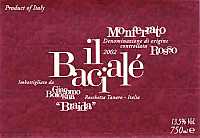
|
|
Monferrato Rosso Bacialè 2002 |
|
| Braida (Italy) | |
| Grapes: Barbera (80%), Pinot Noir (15%), Cabernet Sauvignon (5%) | |
| Price: € 9.60 | Score: |
| The wine shows a brilliant ruby red color and nuances of ruby red, moderate transparency. The nose denotes intense, clean, pleasing and refined aromas that start with hints of cherry and blackberry followed by aromas of pomegranate, blueberry, raspberry, plum, violet, licorice and vanilla. In the mouth has good correspondence to the nose, a slightly tannic attack and appreciable crispness, however balanced by alcohol, good body, intense flavors, good tannins, agreeable. The finish is persistent with flavors of cherry, plum and pomegranate. Bacialè ages in cask for 8-12 months. | |
| Food Match: Broiled meat and barbecue, Stewed meat with mushrooms, Cheese | |
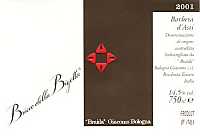
|
|
Barbera d'Asti Bricco della Bigotta 2001 |
|
| Braida (Italy) | |
| Grapes: Barbera | |
| Price: € 28.00 | Score: |
| This wine shows a brilliant ruby red color and nuances of ruby red, little transparency. The nose reveals intense, clean, pleasing and refined aromas which start with hints of black cherry and plum followed by aromas of blueberry, blackberry, violet, toasted wood, vanilla, licorice, menthol and hints of black pepper. In the mouth has good correspondence to the nose, a slightly tannic attack and appreciable crispness, however well balanced by alcohol, good body, intense flavors, good tannins. The finish is persistent with flavors of plum, black cherry and blackberry. A well made wine. Bricco della Bigotta ages for 16 months in barrique followed by 12 months of aging in bottle. | |
| Food Match: Roasted meat, Stewed and braised meat with mushrooms, Hard cheese | |
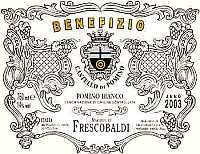
|
|
Pomino Bianco Benefizio 2003 |
|
| Marchesi de' Frescobaldi (Italy) | |
| Grapes: Chardonnay | |
| Price: € 15.70 | Score: |
| This wine shows a brilliant golden yellow color and nuances of golden yellow, very transparent. The nose reveals intense, clean, pleasing, refined and elegant aromas which start with hints of banana, hawthorn and toasted wood followed by aromas of acacia, pineapple, litchi, apple, hazelnut, peach, praline, plum, grapefruit and vanilla. In the mouth has good correspondence to the nose, a crisp attack and pleasing smoothness, however well balanced by alcohol, good body, intense flavors, agreeable. The finish is persistent with flavors of peach, grapefruit and pineapple. A well made wine. Pomino Benefizio ferments and ages in barrique for 12 months followed by 4 months of aging in bottle. | |
| Food Match: Roasted fish, Stuffed pasta, Fish and mushrooms soups, Roasted white meat | |
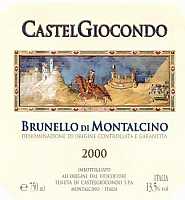
|
|
Brunello di Montalcino Castelgiocondo 2000 |
|
| Marchesi de' Frescobaldi (Italy) | |
| Grapes: Sangiovese | |
| Price: € 25.00 | Score: |
| This Brunello shows an intense ruby red color and nuances of garnet red, little transparency. The nose reveals intense, clean, pleasing, refined and elegant aromas which start with hints of black cherry and plum followed by aromas of violet, cyclamen, pomegranate, carob, blueberry, blackberry, licorice, tobacco, vanilla and menthol. In the mouth has good correspondence to the nose, a tannic attack and however well balanced by alcohol, full body, intense flavors, good tannins, agreeable. The finish is persistent with flavors of black cherry, blueberry and plum. A well made wine. This Brunello ages for at least 2 years in cask followed by at least 4 months of aging in bottle. | |
| Food Match: Game, Roasted meat, Braised and stewed meat, Hard cheese | |
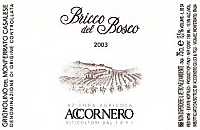
|
|
Grignolino del Monferrato Casalese Bricco del Bosco 2003 |
|
| Accornero (Italy) | |
| Grapes: Grignolino | |
| Price: € 8.00 | Score: |
| This wine shows a pale ruby red color and nuances of brick red, transparent. The nose reveals intense, clean, pleasing and refined aromas which start with hints of cherry, raspberry and plum followed by aromas of strawberry, geranium, cyclamen, blueberry and hints of black pepper. In the mouth has good correspondence to the nose, a slightly tannic attack and pleasing crispness, however balanced by alcohol, good body, intense flavors, agreeable. The finish is persistent with flavors of cherry, raspberry and strawberry. A well made wine. | |
| Food Match: Roasted fish, Stewed fish with mushrooms, Stuffed pasta, Sauteed white meat | |
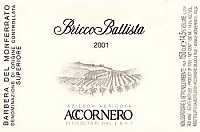
|
|
Barbera del Monferrato Superiore Bricco Battista 2001 |
|
| Accornero (Italy) | |
| Grapes: Barbera | |
| Price: € 21.00 | Score: |
| This Barbera shows a deep ruby red color and nuances of garnet red, impenetrable to light. The nose reveals intense, clean, pleasing, refined and elegant aromas which start with hints of black cherry and plum followed by aromas of violet, blueberry, carob, licorice, tobacco, mace, vanilla, menthol and chocolate. In the mouth has good correspondence to the nose, a tannic attack and however well balanced by alcohol, full body, intense flavors, good tannins, agreeable. The finish is persistent with flavors of black cherry, plum and blueberry. A well made wine. This Barbera ages for 12-18 months in barrique followed by 6 months of aging in bottle. | |
| Food Match: Game, Braised and stewed meat, Roasted meat, Hard cheese | |
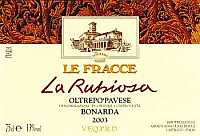
|
|
Oltrepò Pavese Bonarda La Rubiosa 2003 |
|
| Le Fracce (Italy) | |
| Grapes: Croatina | |
| Price: € 6.80 | Score: |
| This wine shows an intense ruby red color and nuances of ruby red, little transparency. The nose reveals intense, clean, pleasing and refined aromas which start with hints of blackberry, plum and blueberry followed by aromas of cherry, strawberry, raspberry, black currant and anise. In the mouth has good correspondence to the nose, a pleasing effervescent and tannic attack, however balanced by alcohol, good body, intense flavors, agreeable. The finish is persistent with flavors of blackberry, cherry and plum. A well made wine. This Bonarda referments in pressurized tank. | |
| Food Match: Cold cuts, Stuffed pasta, Stewed meat | |
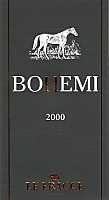
|
|
Oltrepò Pavese Bohemi 2000 |
|
| Le Fracce (Italy) | |
| Grapes: Barbera (55%), Croatina (25%), Pinot Noir (25%) | |
| Price: € 18.50 | Score: |
| This wine shows a brilliant ruby red color and nuances of garnet red, moderate transparency. The nose reveals intense, clean, pleasing, refined and elegant aromas which start with hints of black cherry and plum followed by aromas of strawberry, raspberry, pomegranate, violet, vanilla, tobacco, licorice, cocoa, eucalyptus, mace and hints of black pepper. In the mouth has good correspondence to the nose, a slightly tannic attack and appreciable crispness, however balanced by alcohol, full body, intense flavors, good tannins, agreeable. The finish is persistent with flavors of black cherry, plum and raspberry. A well made wine. Bohemi ages in cask for 18 months. | |
| Food Match: Game, Roasted meat, Braised and stewed meat, Hard cheese | |
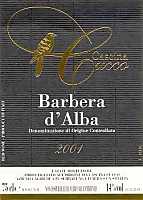
|
|
Barbera d'Alba 2001 |
|
| Cascina Cucco (Italy) | |
| Grapes: Barbera | |
| Price: € 9.30 | Score: |
| The wine shows an intense ruby red color and nuances of ruby red, little transparency. The nose denotes intense, clean, pleasing and refined aromas which start with hints of blackberry, plum and black cherry followed by aromas of blueberry, violet, vanilla, licorice, tobacco, cocoa and cinnamon. In the mouth has good correspondence to the nose, a slightly tannic attack and appreciable crispness, however balanced by alcohol, good body, intense flavors, good tannins. The finish is persistent with flavors of plum, black cherry and blueberry. A well made wine. | |
| Food Match: Roasted meat, Stewed meat with mushrooms, Hard cheese | |
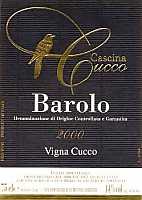
|
|
Barolo Vigna Cucco 2000 |
|
| Cascina Cucco (Italy) | |
| Grapes: Nebbiolo | |
| Price: € 19.60 | Score: |
| This Barolo shows a brilliant ruby red color and nuances of brick red, moderate transparency. The nose reveals intense, clean, pleasing, refined and elegant aromas which start with hints of cherry and violet followed by aromas of raspberry, strawberry, vanilla, plum, licorice, tobacco, cocoa, menthol, lavender and hints of black pepper and mace. In the mouth has good correspondence to the nose, a tannic attack and pleasing crispness, however balanced by alcohol, full body, intense flavors, good tannins. The finish is persistent with flavors of plum, cherry, raspberry and strawberry. A well made wine. This Barolo ages for 18 months in barrique, 9-10 months in cask followed by 12 months of aging in bottle. | |
| Food Match: Game, Braised and stewed meat, Roasted meat, Hard cheese | |
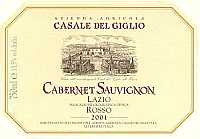
|
|
Cabernet Sauvignon 2001 |
|
| Casale del Giglio (Italy) | |
| Grapes: Cabernet Sauvignon | |
| Price: € 14.40 | Score: |
| The wine shows an intense ruby red color and nuances of ruby red, little transparency. The nose reveals intense, clean, pleasing and refined aromas which start with hints of black cherry and black currant followed by aromas of blueberry, plum, vanilla, licorice, tobacco, violet, blackberry, carob and hints of eucalyptus. In the mouth has good correspondence to the nose, a tannic attack and however well balanced by alcohol, full body, intense flavors, good tannins, agreeable. The finish is persistent with flavors of black cherry, plum and black currant. A well made wine. This Cabernet Sauvignon ages in barrique for 18-20 months. | |
| Food Match: Roasted meat, Stewed and braised meat, Hard cheese | |
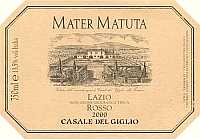
|
|
Mater Matuta 2000 |
|
| Casale del Giglio (Italy) | |
| Grapes: Syrah (85%), Petit Verdot (15%) | |
| Price: € 24.00 | Score: |
| This wine shows an intense ruby red color and nuances of ruby red, little transparency. The nose reveals intense, clean, pleasing, refined and elegant aromas which start with hints of plum, black cherry and black currant followed by aromas of toasted wood, vanilla, blueberry, licorice, tobacco, coffee, carob, mace, black pepper and eucalyptus. In the mouth has very good correspondence to the nose, a tannic attack and however well balanced by alcohol, full body, intense flavors, good tannins, agreeable. The finish is very persistent with flavors of black cherry, plum, black currant and blueberry. A very well made wine. Mater Matuta ages for 22-24 months in barrique followed by 6-8 months of aging in bottle. | |
| Food Match: Game, Roasted meat, Braised and stewed meat, Hard cheese | |
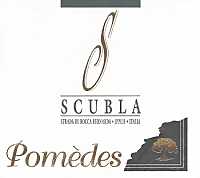
|
|
Colli Orientali del Friuli Bianco Pomèdes 2002 |
|
| Scubla (Italy) | |
| Grapes: Pinot Blanc (49%), Tocai Friulano (49%), Riesling (2%) | |
| Price: € 19.20 | Score: |
| Bianco Pomèdes shows a brilliant golden yellow color and nuances of straw yellow, very transparent. The nose reveals intense, clean, pleasing, refined and elegant aromas which start with hints of plum and toasted wood followed by aromas of pineapple, hawthorn, vanilla, coffee, mineral, apple, hazelnut, peach and praline. In the mouth has good correspondence to the nose, a crisp attack and pleasing roundness, however well balanced by alcohol, good body, intense flavors, agreeable. The finish is persistent with flavors of peach, pineapple, apple and plum. A well made wine. Bianco Pomèdes ferments and ages for 8 months in barrique, for 4 months in steel tanks and for 6 months in bottle. | |
| Food Match: Roasted fish, Stewed fish with mushrooms, Stuffed pasta | |
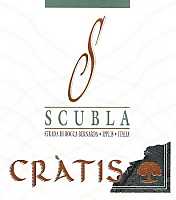
|
|
Colli Orientali del Friuli Verduzzo Friulano Cratis 2001 |
|
| Scubla (Italy) | |
| Grapes: Verduzzo Friulano | |
| Price: € 26.00 | Score: |
| Cratis shows an intense amber yellow color and nuances of amber yellow, transparent. The nose reveals personality with intense, clean, pleasing, refined and elegant aromas which start with hints of candied fruits, dried fig and honey followed by aromas of caramel, chocolate, apricot jam, peach jam, date, lavender, orange marmalade, walnut, citrus fruit peel and vanilla. In the mouth has very good correspondence to the nose, a sweet attack and pleasing smoothness, however well balanced by alcohol, full body, intense flavors, very agreeable. The finish is very persistent with flavors of date, apricot jam, caramel, honey and dried fig. A great wine. Cratis is produced with dried Verduzzo Friulano grapes, ferments and ages in barrique for 24 months followed by 6 months of aging in bottle. | |
| Food Match: Hard and piquant cheese, Chocolate cakes, Dried fruits desserts | |
Pietro Nera - Caven CamunaIn the enchanting Valtellina, land rich in history and wines, Pietro Nera winery is committed since more than sixty years to the revaluation of wines produced with the local Chiavennasca grape |
|
Valtellina - the enchanting alpine territory in the province of Sondrio, in the northern part of Lombardy - is a land considered heroic for many aspects. The morphology of the territory - made of steep slopes in which are built terraces - does not certainly offer easy conditions for the many human activities. Despite the truly hard conditions offered by the mountain nature of this territory, Valtellina is a land capable of giving generous fruits and tasty foods, last but not the least, excellent wine. This is the land from which come the renowned Bitto, Casera and Scimudin cheeses, as well as excellent apples and precious honey, it is here bresaola is being produced and in this land were born the tasty pizzoccheri, a local type of pasta traditionally seasoned with savoy cabbage, potatoes, butter, garlic, pepper and abundant Casera cheese.
Valtellina also means wine, a historical bond based on the local Chiavennasca grape (derived from the local dialect term ciù-enanz, higher) name with which is called in this area the noble Nebbiolo grape. The wines of this land - a production essentially about red wines - benefit from the Nebbiolo's elegance and qualities, including the most renowned and precious wine of the whole Valtellina: Sforzato. This particular wine, produced in limited quantities because of the strict selection of grapes, is made with the best Chiavennasca grapes allowed to dry for three-four months and then vinified during January and February. Besides Sforzato, wines of the area are distinguished for Valtellina Superiore DOCG - produced with Chiavennasca grape - in which are defined some subareas and precisely Grumello, Sassella, Valgella, Inferno and Maroggia. Exactly in this suggestive territory was established in the beginning of 1940's Pietro Nera Winery, founded by Guido Nera, father of the present proprietor Pietro. At the end of 1950's, Pietro Nera, succeeded to his father Guido, by tenaciously continuing the wine business of the family, finally united all the family estates - about 38 hectares (about 94 acres) - located in the classic production areas of Valtellina: Sassella, Inferno, Grumello and Valgella. Today are Pietro Nera's sons - Stefano and Simone - to be in charge for the managerial activity of the winery. Stefano is the wine maker responsible for the production of wines, whereas Simone is in charge for managing the commercial activity. The efforts of Nera family has always been committed to the reconversion of vineyards, both located in traditional terraces, as well as traditional “a gradoni” or “girapoggio” vineyards, allowing mechanized operations while improving the photosynthetic activity of leaves. Clonal selection and the meticulous care in vineyards, allow to obtain the best grapes in order to make wines whose quality is now famous worldwide. All the wine making and wine aging operations are done inside the cellars of the winery, equipped with steel tanks and oak casks of many sizes. Vineyards are all of property and cover an acreage of about 35 hectares (about 87 acres) providing grapes for a total production of 30,000 hectoliters of wine (about 800,000 gallons) of which 5,000 aged in oak casks and barriques. Despite Pietro Nera winery is mainly oriented to the production of red wine, Chiavennasca grape is also used for the production of white wines with interesting qualities. In Teglio - few kilometers east from Chiuro, city in which is located Pietro Nera winery - there is Caven Camuna winery, a farm business owned by the family. Wines produced by Caven Camuna are distinguished for their quality and for the fact of being produced with grapes coming from small vineyards and located in particular subareas. Caven Camuna's wines convince for their quality and for their character, certainly of higher class and exclusive. Caven Camuna's production is pretty limited and it is to be considered as the top quality production of Pietro Nera's wines, in particular Sforzato Messere, rich and full bodied, a worth representative of its category. Caven Camuna's range of products is completed by Valtellina Superiore wines produced in the Inferno and Sassella subareas, as well as Giupa, produced with late harvested grapes. The production of Pietro Nera winery is pretty rich and interesting, and besides the classic Valtellina wines, are also produced particular wines in which Chiavennasca is blended with other grapes. The main production is about Valtellina Superiore DOCG wines coming from the subareas Grumello, Sassella and Inferno including Sforzato. Among red reserve wines a particular mention goes to Valtellina Superiore Signorie, produced in limited quantities with Chiavennasca grape and a small part of Pignola, Rossola and Brugnola, three typical grapes from Valtellina. Among red wines are also produced Sorèl - an interesting blend of Chiavennasca and Cabernet Sauvignon - and Rosso di Valtellina Tellino. The production of Pietro Nera winery is completed by two white wines and a classic method sparkling wine. White wines are both produced with Chiavennasca grape vinified in white, of which “La Novella” is produced with 100% Chiavennasca and “Rezio” blended with Chardonnay. The classic method sparkling wine “Caven” is produced with Pinot Blanc, Pinot Noir and Chardonnay grapes.
|
||||||||||||
|
Score legend Prices are to be considered as indicative. Prices may vary according to the country or the shop where wines are bought |
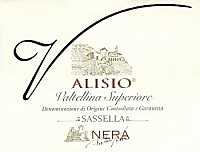
|
|
Valtellina Superiore Sassella Alisio 2001 |
|
| Pietro Nera (Italy) | |
| Grapes: Nebbiolo (Chiavennasca) | |
| Price: € 10.75 | Score: |
| The wine shows a brilliant ruby red color and nuances of garnet red, moderate transparency. The nose denotes intense, clean, pleasing and refined aromas which start with hints of cherry and raspberry followed by aromas of violet, plum, rose, cyclamen, licorice and vanilla. In the mouth has good correspondence to the nose, a tannic attack and pleasing crispness, however balanced by alcohol, full body, intense flavors, good tannins. The finish is persistent with flavors of cherry, raspberry and plum. This wine ages for at least two years. | |
| Food Match: Braised and stewed meat, Game, Roasted meat, Hard cheese | |
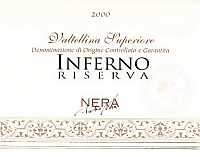
|
|
Valtellina Superiore Inferno Riserva 2000 |
|
| Pietro Nera (Italy) | |
| Grapes: Nebbiolo (Chiavennasca) | |
| Price: € 16.00 | Score: |
| This wine shows a brilliant ruby red color and nuances of garnet red, moderate transparency. The nose reveals good personality with intense, clean, pleasing and refined aromas which start with hints of cherry, rose and raspberry followed by aromas of peanut butter, violet, plum, licorice, tobacco and vanilla. In the mouth has good correspondence to the nose, a tannic attack and pleasing crispness, however balanced by alcohol, full body, intense flavors, good tannins. The finish is persistent with flavors of cherry and raspberry. A well made wine. This Valtellina Superiore ages for at least three years. | |
| Food Match: Game, Roasted meat, Braised and stewed meat, Hard cheese | |
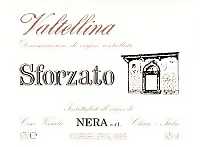
|
|
Valtellina Sforzato 2000 |
|
| Pietro Nera (Italy) | |
| Grapes: Nebbiolo (Chiavennasca) | |
| Price: € 24.30 | Score: |
| The wine shows a brilliant ruby red color and nuances of garnet red, moderate transparency. The nose reveals intense, clean, pleasing and refined aromas that start with hints of black cherry, plum and violet followed by aromas of raspberry, blueberry, licorice, tobacco, vanilla and menthol. In the mouth has good correspondence to the nose, a tannic attack and pleasing crispness, however balanced by alcohol, full body, intense flavors, good tannins, agreeable. The finish is persistent with flavors of black cherry, plum and raspberry. This Sforzato ages for at least one year in cask. | |
| Food Match: Braised and stewed meat, Game, Roasted meat, Hard cheese | |
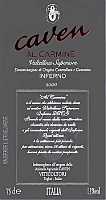
|
|
Valtellina Superiore Inferno Al Carmine 2000 |
|
| Pietro Nera - Caven Camuna (Italy) | |
| Grapes: Nebbiolo (Chiavennasca) | |
| Price: € 16.00 | Score: |
| This Valtellina inferno shows a brilliant ruby red color and nuances of garnet red, moderate transparency. The nose reveals intense, clean, pleasing and refined aromas which start with hints of plum and cherry followed by aromas of raspberry, violet, strawberry jam, vanilla, licorice, menthol, tobacco, cocoa and lavender. In the mouth has good correspondence to the nose, a tannic attack and pleasing crispness, however well balanced by alcohol, full body, intense flavors, good tannins, agreeable. The finish is persistent with flavors of plum, cherry and strawberry jam. A well made wine. Valtellina Inferno Al Carmine ages in cask. | |
| Food Match: Game, Roasted meat, Braised and stewed meat, Hard cheese | |
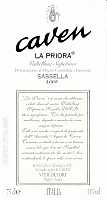
|
|
Valtellina Superiore Sassella La Priora 2000 |
|
| Pietro Nera - Caven Camuna (Italy) | |
| Grapes: Nebbiolo (Chiavennasca) | |
| Price: € 16.00 | Score: |
| The wine shows a brilliant ruby red color and nuances of garnet red, moderate transparency. The nose denotes intense, clean, pleasing and refined aromas that start with hints of cherry and raspberry followed by aromas of violet, rose, plum, strawberry jam, licorice, tobacco, vanilla, menthol and lavender. In the mouth has good correspondence to the nose, a tannic attack and pleasing crispness, however balanced by alcohol, full body, intense flavors, good tannins, agreeable. The finish is persistent with flavors of cherry, raspberry and plum. A well made wine. Valtellina Sassella La Priora ages in cask. | |
| Food Match: Braised and stewed meat, Game, Roasted meat, Hard cheese | |
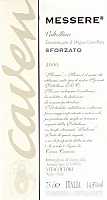
|
|
Valtellina Sforzato Messere 2000 |
|
| Pietro Nera - Caven Camuna (Italy) | |
| Grapes: Nebbiolo (Chiavennasca) | |
| Price: € 37.00 | Score: |
| This Valtellina Sforzato shows a brilliant ruby red color and nuances of garnet red, moderate transparency. The nose denotes intense, clean, pleasing, refined and elegant aromas which start with hints of cherry and plum followed by aromas of raspberry, strawberry, violet, rose, licorice, tobacco, vanilla, cocoa and menthol. In the mouth has good correspondence to the nose, a tannic attack and pleasing crispness, however balanced by alcohol, full body, intense flavors, good tannins, agreeable. The finish is persistent with flavors of cherry, plum and raspberry. A well made wine. This Sforzato ages for at least 12 months in barrique and completes its aging in cask. | |
| Food Match: Game, Braised and stewed meat, Roasted meat, Hard cheese | |
| Pietro Nera - Via 4 Novembre, 43 - 23030 Chiuro, Sondrio (Italy) - Tel. +39 342 482631 Fax. +39 s342 483796 - Winemaker: Stefano Nera - Established: 1940 - Production: 640.000 bottles - E-Mail: info@neravini.com - WEB: www.neravini.com |
Cellar Journal |
|
This section is reserved to wine producers who want to publish news and information about their business, to announce new products or just for communicating to its customers information and promotions about their products and activity. Send news to be published at our e-mail address.
|
News |
|
In this section will be published news and information about events concerning the world of wine and food. Whoever is interested in publishing this kind of information can send us a mail at our address.
|
Matching Grappa and BrandiesDistillates and brandies are usually tasted alone and at the end of meals, however with a proper analysis it is possible to try a matching with some foods |
|
The world of brandies and distillates is an universe rich of emotions, sensations and - in particular - of intense, complex and strong aromas capable of introducing the nose of the wise taster into a new and pleasing experience. The world of brandies and distillates is also rich in production techniques, of accurate and patient aging done in different containers, and raw matters, that after a wise distillation process, are transformed in a crystalline essence in which apparently it is only the alcohol to be seen as the only result. Indeed, in this crystalline liquid, alcohol is abundantly present, and despite this is the main element in terms of quantity, the distillation process also extracts aromas and other substances capable of giving body and shape to a brandy.
In theory, a brandy can be obtained by any substance containing sugar capable of fermenting and therefore capable of producing alcohol. The main substances from which distillates are being produced are offered by fruits and their processing byproducts, first of all grape of which it is virtually distilled every part. Distillation also had the meaning of taking the most out from waste byproducts during the processing of raw matters and in order to make other products. This is the case of grape which pomace - after having being used for the production of wine and still rich in aromas and alcohol - is distilled in order to obtain a brandy. In fact, this is the method traditionally used for the production of grappa, the noble and ancient distillate produced since many centuries in Italy and considered as the national brandy. To tell the truth, with the term grappa are also mistakenly called other distillates produced in other countries, not all the times produced with grape pomace and not always having the same quality. It should be good to avoid this confusion while recognizing to Italy the sole paternity of this noble distillate, as it is witnessed since many century by the tradition and history of Italy.
|
||||||||
|
Just like for wine, before trying a hypothetical matching with food, it is important and fundamental to know the qualities of a distillate - or better to say, of distillates - in order to understand their organoleptic qualities. In this sense it is also appropriate to remember that distillates are never drunk - as it may happen in case of low alcohol beverages, such as wine and beer - and are appreciated in tiny sips and served in limited quantities. Moreover, the real distillates connoisseurs know the evaluation of a brandy - of any origin, quality and production process - is mainly based on the appreciation of its aromas, undoubtedly the most pleasing and gratifying part during the tasting of these beverages. Tasting a brandy with the sole purpose of appreciating alcohol and its burning effect is stupid, useless and - last but not the least - expensive, because high quality brandies have pretty high prices and the same effect can be obtained - however a deprecable and deplorable act - with cheaper beverages, of disputable quality and value. Every brandy - with no exception and no distinction - is mainly appreciated for its aromas and it is always and however consumed in tiny sips. This factor must be considered when a distillate is being matched with a food because the served quantity will be very limited as opposed to other beverages. Even the aromas of a distillate will be considered with extreme care because the matching with food will also be formulated according to this quality, a factor that - for example - is considered for the matching with wine as well. Alcohol in distillates - besides representing the main element in terms of quantity - contributes to the development of aromas as, besides having its specific aroma, transports upwards the molecules of other aromas, therefore allowing a better perception. In any alcoholic beverage - including wine - alcohol therefore plays a fundamental role in the perception of aromas and of their exaltation. Just like for wines, a good distillate is recognized by the lack of faults, a condition which can be obtained by using high quality raw matters - fresh and faultless - the quality of the distillation process, distillation system and the type of the alembic still. It should be remembered the distillation process is critical for the development and the quality of aromas. The aromas of the same raw matter obtained with a discontinuous distillation process are different from the ones obtained with the continuous system. The same consideration is also true for the materials used for the construction of the alembic. In distillates aged in wood containers - typically average sized casks, more frequently barrique - a fundamental role is played by the material used for the construction. The type of wood, as well as the volume of the cask and the aging time, will directly influence the aromatic and gustatory qualities of the distillate. It is also good to remember that during the aging in cask, part of the distillate - alcohol and water - passes through the pores of wood therefore causing a concentration of the distillate. This phenomenon is known in the Charentes and Gascony areas - in which are produced Cognac and Armagnac respectively - as part des anges (part of angels). Of course the raw matter and its organoleptic qualities represent a fundamental factor for the formation of a distillate's aromas, in particular for brandies which are not aged in cask. Fruit brandies and grappa - two distillates which are not generally aged in cask - take most of their aromatic richness from the raw matter to be distilled and the mastery of the distiller plays a fundamental and important role. For example, in case of the noble Italian grappa - exclusively produced by distilling grape pomace - the aromas are mainly determined by the ones found in grape's skins. This means in a grappa obtained with the pomace of an aromatic grape - such as Muscat Blanc or Gewürztraminer - it will be possible to appreciate the primary aromas of the grape used for its production. In this sense it can be said that in every grappa - provided it was distilled in respect of the pomace's quality - it is always possible to appreciate the primary aromas of every grape. Even though the aromas of a distillate represent one of its main pleasures, sooner or later it will be tasted in order to asses its flavors. The main gustatory characteristic of every distillate certainly is represented by the burning sensation of alcohol and despite this sensorial “trauma” inhibits gustatory perception for some seconds, in distillates are also present other flavors. Concerning this aspect it is good to remember the aggressiveness of alcohol - in aromas as well as in taste - is strongly influenced by the serving temperature. The ethereal quality of alcohol will be more evident at high temperatures, whereas it will be drastically reduced at low temperatures. In other words, a distillate served chilled will be perceived as less alcoholic although the actual and real quantity will not be altered at all. Besides the burning sensation, alcohol however has a basically sweet taste. Sweetness in distillates is not determined by alcohol only: it is good to remember in some distillates is allowed the adding of sugar or caramel, ingredients that will reinforce the sweet taste and - in case of caramel - the bitter taste as well. Acid and salty tastes are always considered faults in every distillate, however it is necessary to observe that acidity in distillates is always present and generally balanced by alcohol - as well as any possible added sugar - and therefore its apparent sensation is not found in quality distillates. The intensity of bitter taste - generally perceived after some seconds from swallowing the distillate - will be considered with extreme care according to the food to be matched. To this regards it is good to remember distillates aged in wood tend to be more “bitter” than distillates aged in inert containers. Of primary importance is the evaluation of tastes, of their taste-olfactory correspondence, quality, intensity, persistence and elegance.
|
||||
|
Before proceeding with the matching with food, it is good to clear the fact distillates are never served or tasted like the other alcoholic beverages, such as wine, for example. This does mean distillates cannot be served as beverages for a whole meal as it would be very hard for everyone to stand to the intake of strong quantities of alcohol without having any obvious and unwanted effect. The matching with food and distillates is however meant as the service of a single food associated to a distillate, typically served at the end of a meal or in specific “contemplative” moments of the day, hopefully in good company and in front of a fireplace. This premise excludes - as a matter of fact - a long series of foods because it seems more appropriate to serve distillates only in particular cases. It must also be considered that not all foods can stand the strong impact of distillates, as well as not all wines can support the “personality” of every food. Let's begin with aromas. An aromatic distillate will always be served with an equally aromatic food. For example, in case a distillate has aromas resembling spices - such as a brandy or a grappa aged in cask - it will be appropriate to match it with a food rich in spices, such as spicy or chocolate desserts. A more delicate fruit brandy or an aromatic grappa, will be appropriate for the matching with a fruit dessert or a semifreddo, whose low temperature will also make alcohol more tolerable. This characteristic will also be useful in the gustatory phase because the taste-aromatic qualities of the distillate and of the food will tend to exalt each other. If we consider, for example, a food in which are present spices, such as Siena's Panforte or Terni's Panpepato, the spicy qualities of the distillate will be in perfect harmony with the spicy and robust character of the food. Concerning this aspect, it is also necessary to evaluate the taste-olfactory persistence of food and of the distillate: a food having a long taste-olfactory persistence will always be matched to a distillate having a long persistence. As already mentioned, the main gustatory characteristic of a distillate is represented by alcohol. There are foods that because of their physical and organoleptic qualities tend to cover the oral cavity and therefore diminishing the perception of other gustatory stimuli. This is the case of fatty substances, such as in case of some cold cuts and chocolate. Any possible fatty substance present in the mouth, by covering the oral cavity, will diminish the burning perception of alcohol therefore making it more tolerable. Alcohol also has a high degreasing effect, therefore it will be ideal for balancing and eliminating the covering sensation of fats and leaving the mouth perfectly clean. The association of alcohol and fat substances fully justifies alone the matching of distillates with chocolate and, in come cases, with particularly fatty cold cuts, such as in case of 'nduja, the typical and very good salami produced in Calabria, Italy. The most classic and well made matching of distillates certainly is with fondant chocolate, a matching generally suggested with Cognac or with Grappa. Both distillates are fully suited to this type of matching because - as opposed to wine - they are capable of supporting the strong personality and the high complexity of a food like chocolate. This food seems to have all the necessary qualities for the matching with distillates: intense aromas, strong and intense flavors, fats, long taste-olfactory persistence; qualities that usually shadow most of the wines and sometimes certain distillates as well. Just like for enogastronomical matching, even with distillates it is necessary a good dose of curiosity and enterprise: the important - as always - is to carefully evaluate the quality of foods and of distillates. Surprises will be endless and, finally, never forget the pleasure of distillates - as well as of wines - is never represented by quantity, but exclusively by quality and in particular by aromas.
|
TeaKnown in every country of the world, tea is among the most ancient and spread beverages, a history almost 5000 years long which is told in its wonderful aromas and tastes |
|
There is no country in the world where tea in unknown and more precisely the beverage obtained by infusing its leaves in water. Tea is among the most ancient known beverages, a history of about 5000 years old that from China - its original homeland - has spread all over the world, protagonist of important historical facts and commercial fortunes of whole countries. The world of tea is very rich in aromas, flavors and colors, an endless richness of culture, traditions and qualities like no other beverage. But also protagonist of ceremonies and cultures representing the essence of a profound and intimate philosophy, which is completed by the harmony of these perfumed leaves which spread their aromas in the air, in the water and in the soul of human beings. Listing all the varieties of known teas is a pretty hard task because there are more than a thousand types known. It is enough to think all this originated from a plant which according the place of cultivation, meteorological and productive conditions, is capable of offering endless nuances.
|
|
Talking about the history of tea is - for many aspects - talking about the history of humanity and in particular about one of the most ancient civilizations of the world: China. It is right in this enchanting country the history of tea began and from here - in times which can be considered relatively recent - has spread all over the world. A legend has it that tea - meant as a beverage - was discovered by emperor Sheng Nung (Shen Nong) around the year 2737 BC. It is told one day Sheng Nung was resting sitting at the feet of a tree and he had a bowl of hot water at his side, a Chinese custom still in use today. It seems some leaves fell from the branches of the tree and landed in the emperor's bowl. When Sheng Nung drank the infusion he found it to be delicious and corroborating. The tree offering its shadow to the emperor was a plant of tea and this is how - for the first time - was born the famous infusion which would become in few years the imperial beverage par excellence with endless virtues and properties. Another legend tells a different origin about tea. The famous Buddhist prince Bodhidharma (Dharuma) - Da Mo in Chinese - during his meditation, suddenly fell asleep. When he woke up, Bodidharma cut his eyelids and threw them in the ground: from them sprouted some gems which produced the plant of tea, whose infusion was capable of keeping the mind vigil and to keep sleep away. It is good to know that when Bodhidharma arrived in China, tea was already known in the country since many centuries. Legends apart, tea is a very common beverage in China since more than 40 centuries and to this period is dated back the first written citation about the plant of tea, of its effects and properties in the human body. Despite the history of tea has developed for centuries and has become an indissoluble part of Chinese culture, it is only in the year 760 AD we finally have the first book entirely dedicated to the tea plant and its beverage. Before this date, tea is frequently mentioned in medical books in which are always praised its curative properties for the wellness of body, soul and mind.
The first book completely dedicated to tea was written by Lu Yu - to be considered the first and real master of the tea ceremony and cult of all times, still today considered as the god of tea - who in 760 AD wrote the precious cha jing (Canon of Tea) in which he scrupulously described the cultivation, production, brewing and the way of drinking tea. His advices are very valuable still today for the knowledge of tea and for its appreciation and, despite the techniques described by Lu Yu for the brewing of tea had developed in time according to the taste of the subsequent years, his advices, and in particular the ones about water and its boiling, are extremely valuable and precious still today. In the 1000 AD - during the Tang dynasty - tea became a Monopoly and was used as a currency for paying taxes as well as a trading good. The first information about tea arrived in Europe thanks to the memories of Marco Polo who described his journeys in the book “The Million”. In the sixteenth century Giovanni Battista Ramusio - a Venetian humanist and geographer - longly described tea in his writings therefore offering for the first time to the Europeans a detailed knowledge about this beverage. Tea arrives for the first time in Europe in 1610 transported by a Dutch ship of the “Company of the Indies” and only 48 years later arrived in England. From this moment on the spreading of tea - mainly for commercial reasons - spread everywhere and in every country of Europe also thanks to its medical properties recognized even in the western world. Tea trade has also allowed an efficient development of naval engineering because in order to ensure a faster shipping, were built faster and faster ships - the so called clippers - which challenged one against the other in speed races in the oceans of the world. Tea also spread in Japan and in the other Asian countries where still today represents a primary element of their cultures, in particular in Japan where the culture of tea developed in a formal rite: the famous Cha No Yu (hot water for tea), that is the tea ceremony who had in Sen No Rikyu (1522-1591) its most representative master.
|
||||||||
|
Before discussing the description of tea, it is appropriate to say its classification is extremely vast that would certainly deserve hundreds of pages in order to give a proper explanation. What we are offering in this article should be exclusively considered as an essential and abridged introduction. Tea is obtained by processing the leaves of Camellia Sinensis, originating from China, or Camellia Assamica, originating from northern India. When left at its wild condition, the tea plant can also reach thirty meters in height (about 100 feet): for this reason in tea plantations are done periodical pruning in order to keep plants to a height of about 120 centimeters (about 4 feet) therefore facilitating harvest. The best quality tea is obtained by the first three leaves of the apical sprout of the plant - more delicate, soft and aromatic - whereas lower qualities are obtained with the subsequent leaves - older and coriaceous - and rarely harvested beyond the fourth leaf from the apical sprout. The quality of tea is also determined by the period of harvesting, meteorological condition of the season and place of cultivation. The processing method determines the category of tea. It is good to remember every type of tea - no matter the processing - is always obtained by the same plants: Camellia Sinensis and Camellia Assamica. Tea is generally classified in white tea, green tea, black tea (called in China red tea) and semifermented tea or oolong tea (Wu Long Cha in Chinese). To these categories is to be included the so called brick tea, that is green or black tea leaves - together or alone - that after having been processed with steam are pressed in compact “nest” shaped bricks - as well as in other shapes - of which the most renowned one is Tuo Cha produced in Yunnan, the Chinese region bordering Tibet. From Yunnan also comes the so called Pu Erh Cha, appreciated for its therapeutic properties. In China are also popular teas scented with flowers petals (Hua Cha in Chinese) - of which the most renowned ones are scented with jasmine and chrysanthemum - and not to be confused with other scented commercial teas - generally black - aromatized with the most improbable and different essences, not always of natural origin. What follows is a brief explanation about the processing for green and black tea. Soon after harvesting, the leaves are allowed to dry for about 8-24 hours at a temperature from 20° to 25° C (68-77° F), according to the type of tea to be made. Next the leaves are spread over mats and in ventilated rooms in order to allow a further drying and the proper loss of humidity: the leaves become softer and are now ready to be rolled. The rolling operation breaks the cells of the leaf therefore allowing an essential oil to come out which in contact with air oxidizes, a phase improperly called fermentation and that would be called oxidation instead. At this point the subsequent operations depend on the type of tea to be made. In the production of black tea, leaves are allowed to oxidize for some hours - according to style - a phase in which leaves get their typical dark brown color. The leaves are then toasted for about thirty minutes therefore completing the processing for black tea. In green tea the oxidation is never allowed and it is interrupted by processing the leaves to the effects of heat, such as steam, direct heat or slow toasting in copper pots. Listing all the types of tea would be extremely reductive, as in China only are found thousands different styles to which must be included the ones produced in Japan, Korea, India and Sri Lanka (Ceylon), as well as the ones of the rest of the world. Black tea produced in India is generally classified according to their quality and the processing technique, defined by specific acronyms. The primary classification is divided into whole tea leaves, broken leaves and tea dusts. The acronyms used for classifying whole tea leaves are, from the highest quality level to the lowest: FOP (Flowery Orange Pekoe), OP (Orange Pekoe), Pekoe, Pekoe Souchong and Souchong. The category FOP is divided into SFTGFOP (Special Finest Tippy Golden Flowery Orange Pekoe), FTGFOP (Finest Tippy Golden Flowery Orange Pekoe), TGFOP (Tippy Golden Flowery Orange Pekoe) and GFOP (Golden Flowery Orange Pekoe). Broken tea leaves (or simply broken) are classified into: GFBOP (Golden Flowery Broken Orange Pekoe), GBOP (Golden Broken Orange Pekoe), TGBOP (Tippy Golden Broken Orange), FBOP (Flowery Broken Orange Pekoe) and BOP (Broken Orange Pekoe). These acronyms can also be followed by the number one to define “premium quality”, that is a higher quality. Tea generally used for filters belongs to fannings and dusts qualities, pretty small particles and generally made of debris from the processing. Two considerations about the terms Orange and Pekoe. The term Orange has no connection with the English word meaning the homonymous fruit, it derives from the noble Dutch family Oranje Nassau. The term Pekoe derives from the Cantonese expression Pak Ho (literally white downy) with which are usually called the young tea sprouts covered by white downy.
|
||||
|
The culture of tea is so widely spread in the world that every country has virtually developed its own techniques and ceremonies for its brewing. Among the most renowned ones are mentioned the Chinese method - which include many variants, techniques and ceremonies - the Japanese and the English, mainly used for brewing black tea. Despite of the method to be used, it is good to remember brewing a good tea is not simple, as it is not just throwing some leaves - or even worse a filter - in infusion in boiling water. Brewing tea is an act made of simple movements - even in case it is in the form of a ceremony - however it will be the quality of ingredients and of tools to make it a success. This premise can be seen as frivolous, however it is good to remember tea is an infusion, therefore the quality of water and of tea are of fundamental importance. To anyone who believes this to be excessive and maniacal, we suggest reading the thoughts of the great Lu Yu about choosing and boiling water: a detail which represents the different between an excellent tea and a bad one.
Lu Yu - considered by Chinese people the god of tea - suggested the best water was the one found in mountains, preferably the one dripping from stalactites or gathered in wells formed in stones, to be used fresh and just gathered: a condition not easy for everyone. However it is good to remember a too much alkaline water will give a more insipid tea, and it is always advisable not to use water rich in calcium. What follows is the technique for brewing green tea - the most common type in China and having higher therapeutic properties - according to the Chinese method by using a teapot. Take a boiler, preferably made of stainless steel or cast iron. Heat the water and wait until boiling. This phase is extremely critical because in case water is allowed to a tumultuous boiling, tea will get an insipid and “burnt” taste. As the water begins boiling, with tiny bubbles floating to the surface from the sides like chains of pearls, turn the heat off. It should be remembered that for brewing a good green tea it is good to allow water to cool down at about 80°C (176°F) in order not to burn and ruin the delicate and aromatic green tea leaves. In case it is wished to brew black tea, it can be used the same boiling technique and pouring the hot water over the leaves on the teapot. The best teapots for brewing green tea indisputably are the ones made of red earthenware produced at Yi Xing (China), however also the ones made of porcelain represent a good substitute. Pour some hot water in the teapot in order to warm it and then throw it away. Put the tea in the teapot - usually two or three grams for every 2 deciliters of water (about a teaspoonful in about 6.7 fl.oz.) - and pour water at the right temperature on the leaves. The infusion time varies according to the quality and the variety of tea - including the area of origin and the production technique - however it is reasonable to allow an infusion time of at least 5 minutes. As this time is passed - if wished - leaves can be eliminated. Concerning this aspect it is appropriate to remember Chinese generally leave the leaves in infusion until the end of the consumption and in particular when they brew it with the typical bowl with lid - the so called Gui Wan - the most common tool in China for individual brewing and consumption of tea. A final consideration must be said about caffeine. This alkaloid, because of the effect of heat, is the first substance to be extracted from the leaves, whereas polyphenols - that is the most useful, healthy and therapeutic substances - require longer infusion times and they also efficiently slow the release of caffeine in the body. This does mean that a tea infused for 2 or 3 minutes is rich in caffeine and poor in polyphenols, in other words it will be obtained an exciting beverage. By allowing an infusion of more than 5 minutes - or even better to leave the leaves in the teapot - the effect of caffeine in the body will be lower while appreciating the endless benefits of this millenary, wonderful, precious and aromatic beverage. What has already said is not true for black tea, because a long infusion time makes the beverage astringent and bitter: in this case it will be used an infusion time of 3-5 minutes and therefore the leaves will be eliminated from the beverage.
|
||||||||
AquavitaeReview of Grappa, Distillates and Brandy |
|
|
| Distillates are rated according to DiWineTaste's evaluation method. Please see score legend in the "Wines of the Month" section. |
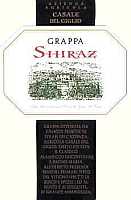
|
|
Grappa Shiraz |
|
| Casale del Giglio (Italy) | |
| (Distiller: Distilleria Pilzer) | |
| Raw matter: Pomace of Syrah | |
| Price: € 15.20 - 50cl | Score: |
| This grappa is colorless, limpid and crystalline. The nose denotes intense, clean and pleasing aromas of blackberry, plum, pear, licorice and hazelnut with pretty perceptible alcohol pungency. In the mouth is intense with alcohol pungency which tends to dissolve rapidly and balanced sweet hint. The finish is persistent with flavors of blackberry, plum and licorice. This grappa is distilled with discontinuous alembic still. Alcohol 43%. | |
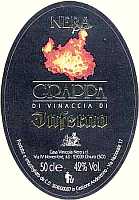
|
|
Grappa di Vinaccia di Inferno |
|
| Pietro Nera (Italy) | |
| (Distiller: Distillerie Bianchini) | |
| Raw matter: Pomace of Chiavennasca (Nebbiolo) | |
| Price: € 19.30 - 50cl | Score: |
| This grappa is colorless, limpid and crystalline. The nose reveals intense, clean and pleasing aromas of cherry, raspberry, plum, hazelnut, violet and licorice. In the mouth is intense with evident alcohol pungency which tends to dissolve rapidly, balanced sweet taste. The finish is persistent with flavors of plum, cherry and hazelnut. This grappa is distilled with a discontinuous alembic still. Alcohol 42%. | |
|
|
|
Grappa di Vinaccia di Sforzato |
|
| Pietro Nera (Italy) | |
| (Distiller: Distillerie Bianchini) | |
| Raw matter: Pomace of Sforzato | |
| Price: € 21.85 - 50cl | Score: |
| This grappa is colorless, limpid and crystalline. The nose denotes intense, clean and pleasing aromas of cherry, violet, raspberry, strawberry, licorice and plum with pretty perceptible alcohol pungency. In the mouth is intense with alcohol pungency which tends to dissolve rapidly, agreeable, balanced sweet hint. The finish is persistent with flavors of plum, cherry and raspberry. This grappa is distilled with a discontinuous alembic still. Alcohol 43%. | |
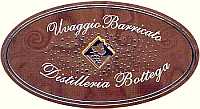
|
|
Grappa Uvaggio Barricato |
|
| Distilleria Bottega (Italy) | |
| Raw matter: Pomace of Merlot and Cabernet | |
| Price: € 13.82 - 70cl | Score: |
| This grappa shows a pale amber yellow color, limpid and crystalline. The nose reveals intense, clean, pleasing and refined aromas of plum, pear, raspberry, licorice, vanilla, tobacco, hazelnut, black cherry and praline with almost imperceptible alcohol pungency. In the mouth is intense with very balanced alcohol pungency which tends to dissolve rapidly, pleasing smoothness, balanced sweet hint. The finish is persistent with flavors of licorice, plum, hazelnut and black cherry. A well made grappa distilled with steam operated alembic. Ages for about 12 months in barrique. Alcohol 38%. | |
Wine Parade |
|
|
| The best 15 wines according to DiWineTaste's readers. To express your best three wines send us an E-mail or fill in the form available at our WEB site. |
| Rank | Wine, Producer | |
|---|---|---|
| 1 |
| Harmonium 2001, Firriato (Italy) |
| 2 |
| Riesling Cuvée Frédéric Emile 1999, Maison Trimbach (France) |
| 3 |
| Montepulciano d'Abruzzo Villa Gemma 1999, Masciarelli (Italy) |
| 4 |
| Pinot Noir Napa 2002, Clos du Val (USA) |
| 5 |
| Chablis Grand Cru Les Clos 2002, Domaine Billaud-Simon (France) |
| 6 |
| Jerez Fino Tio Pepe, Gonzalez Byass (Spain) |
| 7 |
| Turriga 1998, Argiolas (Italy) |
| 8 |
| Amarone della Valpolicella Classico Capitel Monte Olmi 1999, Tedeschi (Italy) |
| 9 |
| Moscato d'Asti 2003, Vignaioli di S. Stefano (Italy) |
| 10 |
| Brunello di Montalcino Prime Donne 1998, Donatella Cinelli Colombini (Italy) |
| 11 |
| Palazzo della Torre 2000, Allegrini (Italy) |
| 12 |
| Montepulciano d'Abruzzo Riparosso 2001, Illuminati (Italy) |
| 13 |
| Notarpanaro 1999, Taurino (Italy) |
| 14 |
| Edizione Cinque Autoctoni 2001, Farnese (Italy) |
| 15 |
| Aglianico del Vulture La Firma 2002, Cantine del Notaio (Italy) |
| |||||||
Privacy Policy | |||||||


| Copyright © 2002-2024 Antonello Biancalana, DiWineTaste - All rights reserved |
| All rights reserved under international copyright conventions. No part of this publication and of this WEB site may be
reproduced or utilized in any form or by any means, electronic or mechanical, without permission in writing from DiWineTaste. |